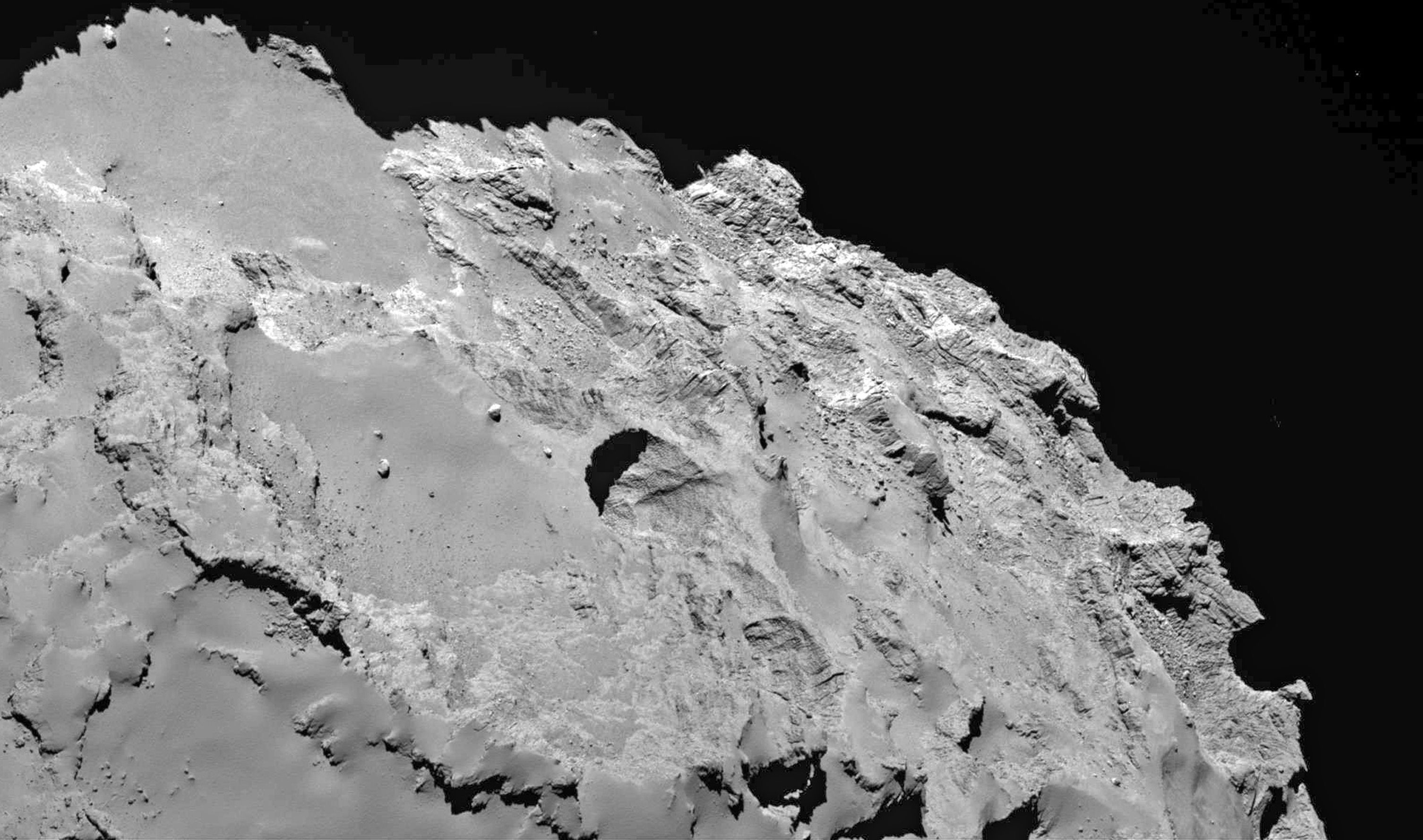The comet being studied by Europe's Rosetta spacecraft has massive sinkholes in its surface that are nearly wide enough to swallow Egypt's Great Pyramid of Giza, research published on Wednesday shows.
Scientists suspect the pits formed when material on the comet's surface collapsed, similar to sinkholes on Earth, a study published in the journal Nature said.
The cavities on comet 67P/Churyumov-Gerasimenko, which Rosetta has been orbiting since August, are enormous, stretching some 656 feet (200 meters) in diameter and 590 feet (180 meters) in depth.


















With your current subscription plan you can comment on stories. However, before writing your first comment, please create a display name in the Profile section of your subscriber account page.